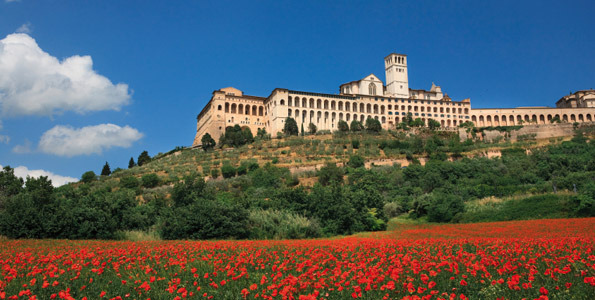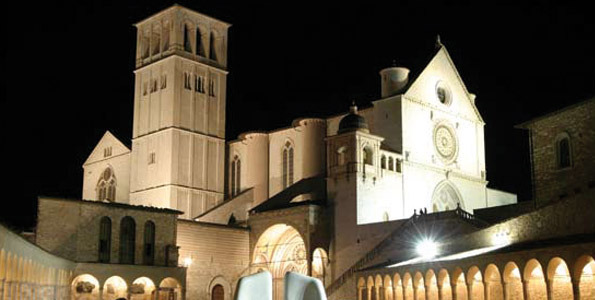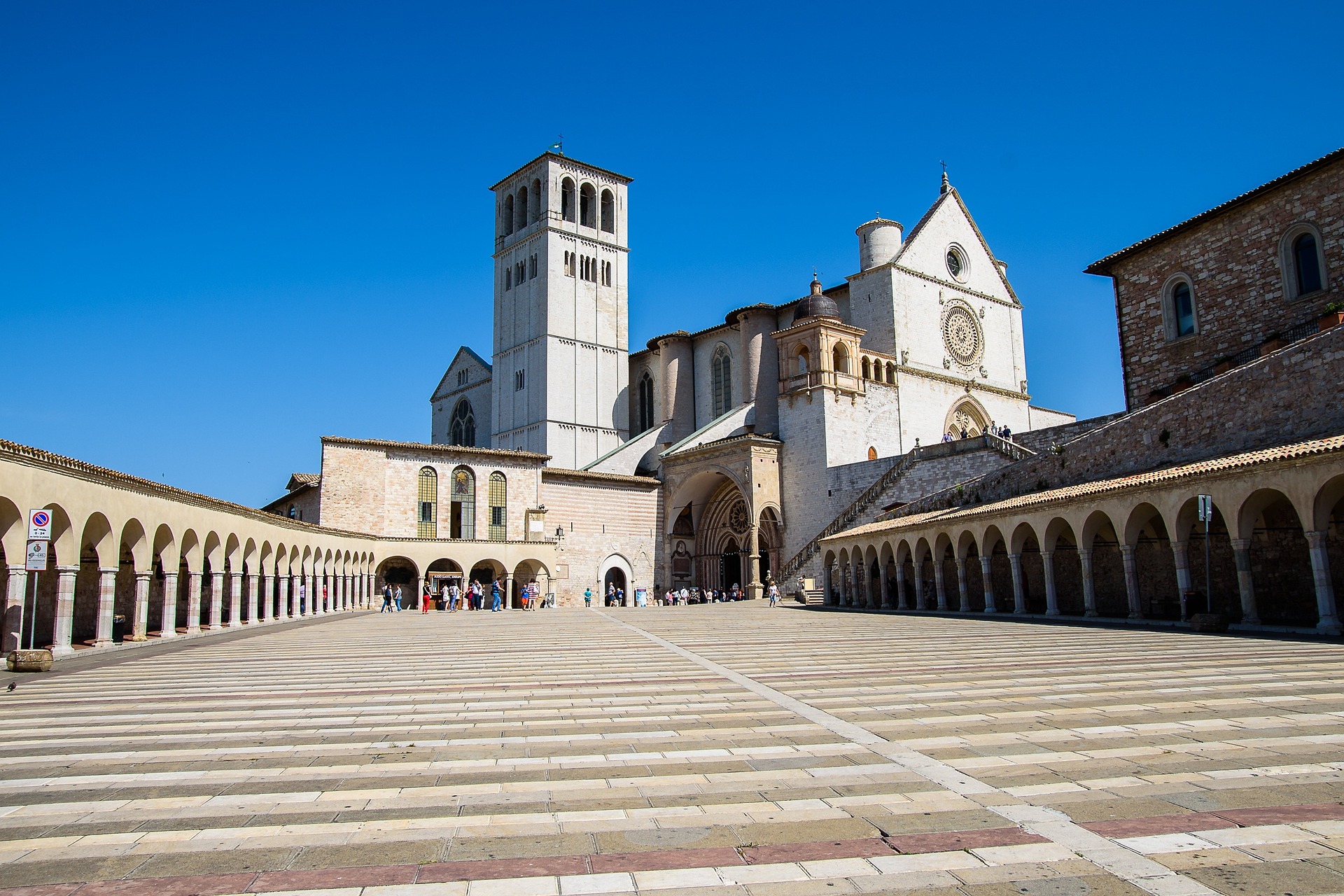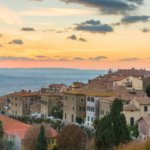Assisi, the mystic tour
A day trip here will be a tremendous mystic experience because St. Francis is one of the most venerated religious figures in history.
The Basilica of San Francesco d’Assisi is one of the most important places of Christian pilgrimage in Italy.
The burial place of St. Francis includes two churches (the Lower Church and Upper Church) and was built immediately after his canonization in 1228, two years after his death.
The interior of the Upper Church is important as an early example of the Gothic style in Italy.
The Upper and Lower Churches are decorated with frescoes by numerous late medieval painters and include works by Cimabue, Giotto, Simone Martini, Pietro Lorenzetti and possibly Pietro Cavallini.
It has been a World Heritage Site since 2000.


The Basilica of Santa Maria degli Angeli (Saint Mary of the Angels) is a church situated on the plain at the foot of the hill of Assisi. The basilica was constructed between 1569 and 1679 enclosing the 9th century little church, the Porziuncola, the most sacred place for the Franciscans. It was here that the young Francis of Assisi realized his vocation and renounced normal life in order to live in poverty among the poor and thus started the Franciscan Order.
Two very important parts of the Basilica are the Cappella del Transito and the Rose garden. The Cappella del Transito is the small room where St. Francis died. It was a little hut serving as a primitive infirmary for the sick. The Rose garden is the last remains of the ancient wood in which St Francis and his friars lived. Here he talked to the turtledoves, inviting them to praise God. Turtledoves have been nesting since time immemorial in the hands of St. Francis statue in this rose garden.
According to tradition, one night St. Francis, feeling the temptation to abandon his way of life, rolled, completely naked, in the bramble thorns in an attempt to overcome doubt and temptation. When in contact with his body, the bramble bushes turned into dog-roses without thorns. Since then, the dog-roses have always grown in the garden. There is an amazing feeling of peace and of tranquillity which must be experienced to be believed.
Marzo 24, 2023

